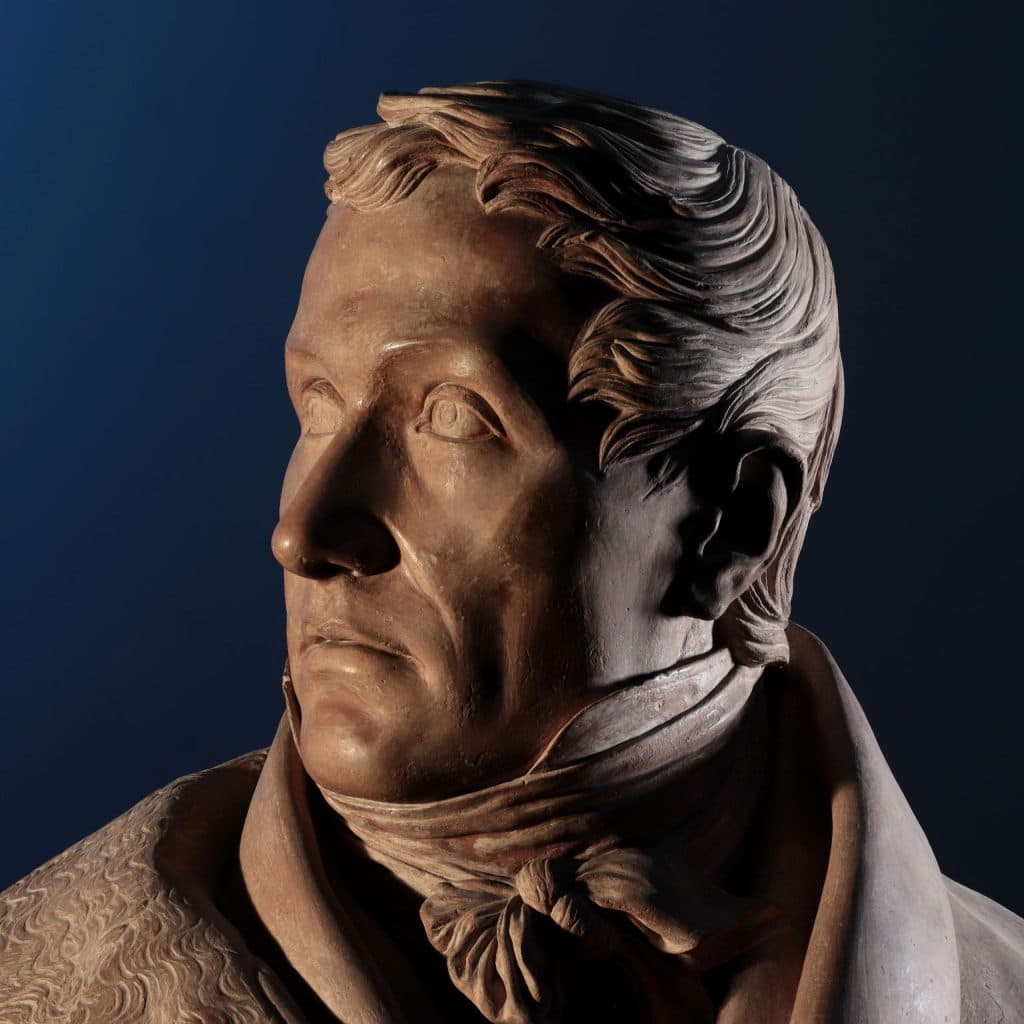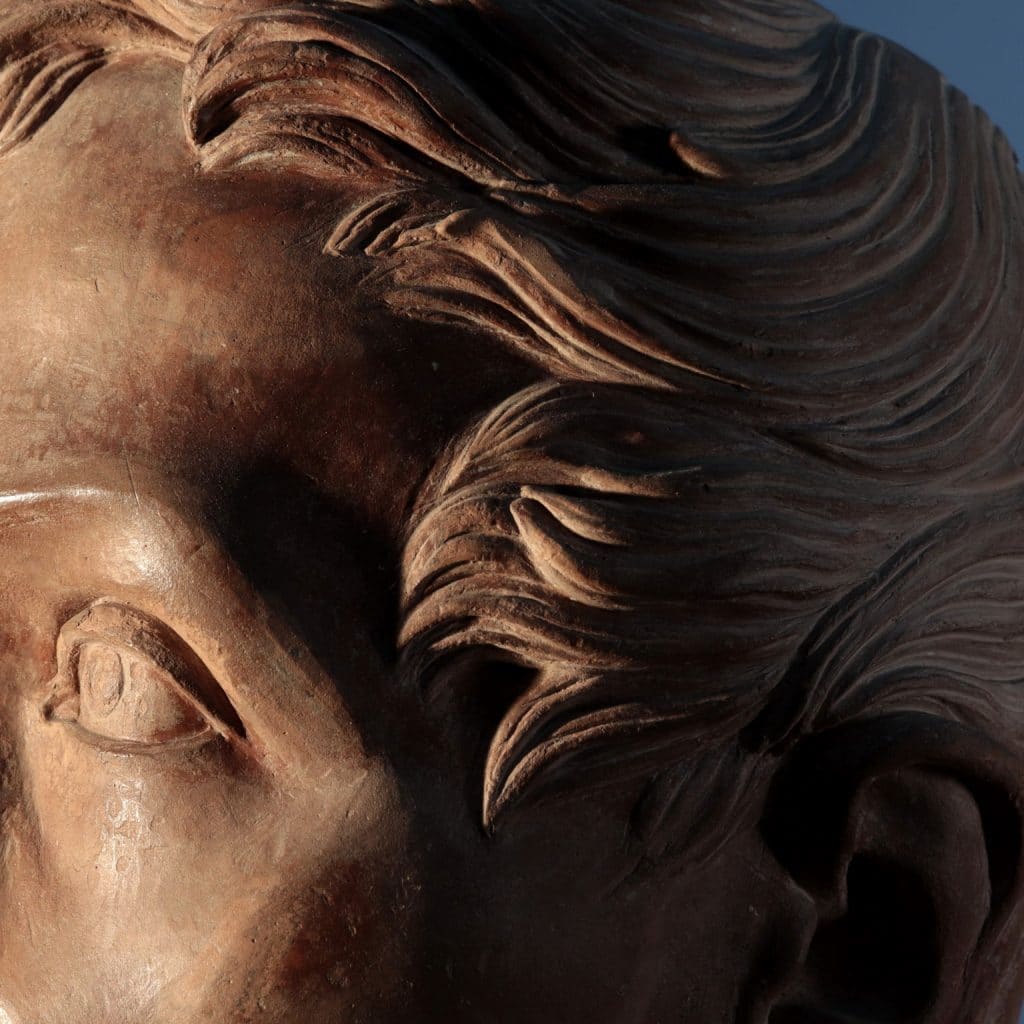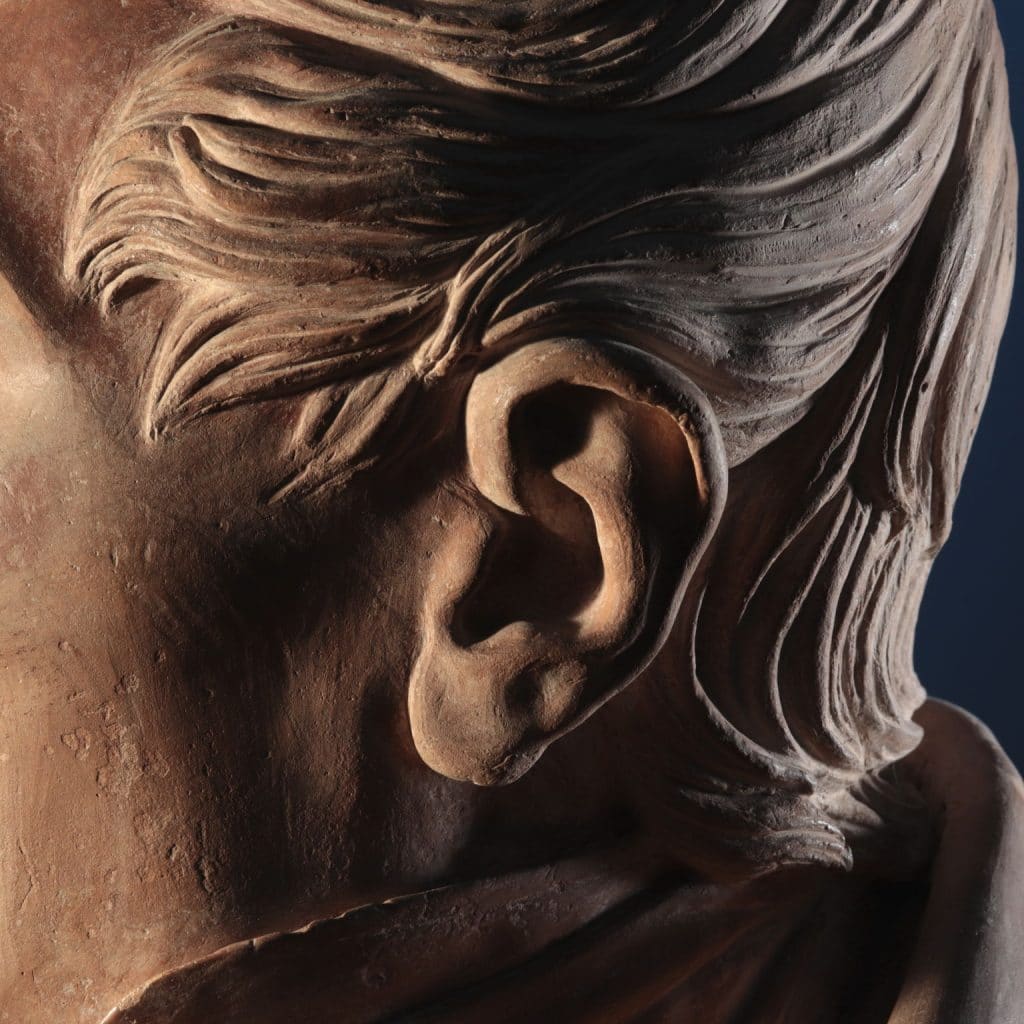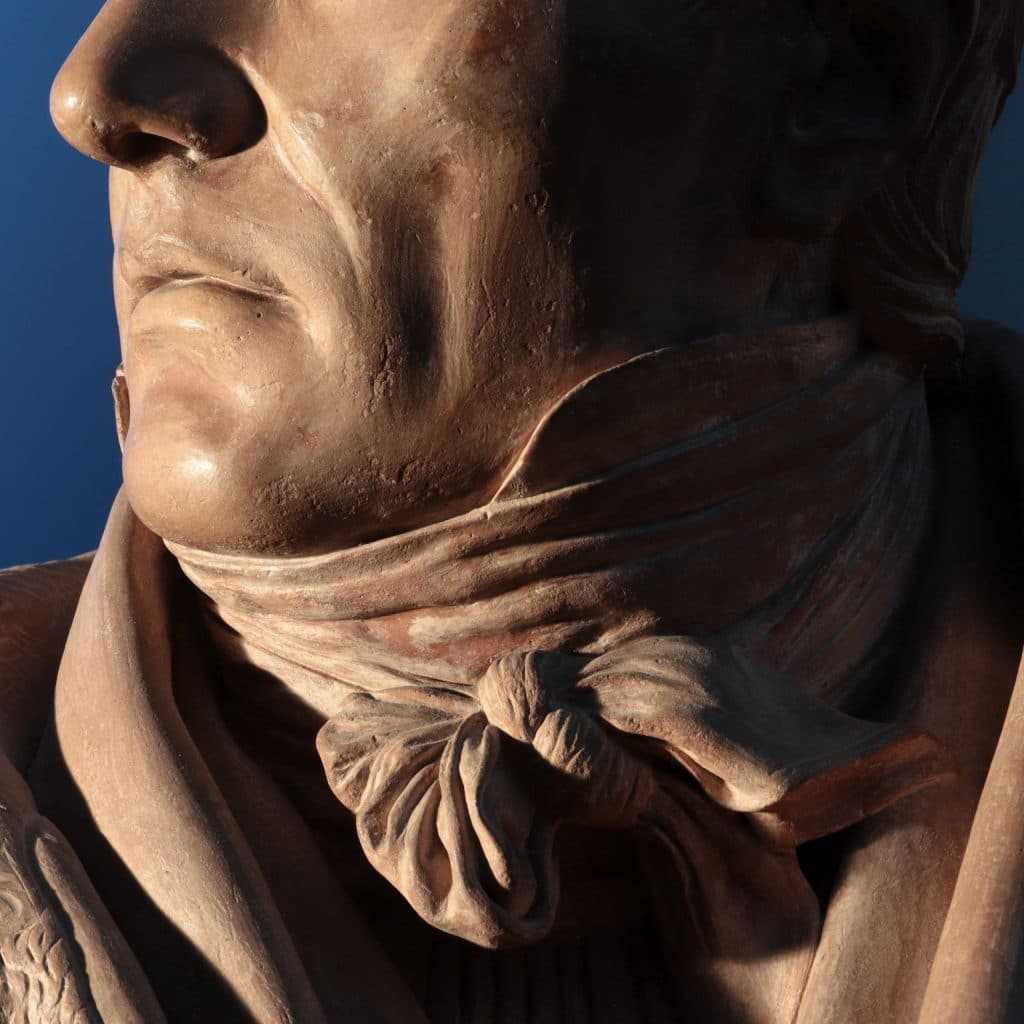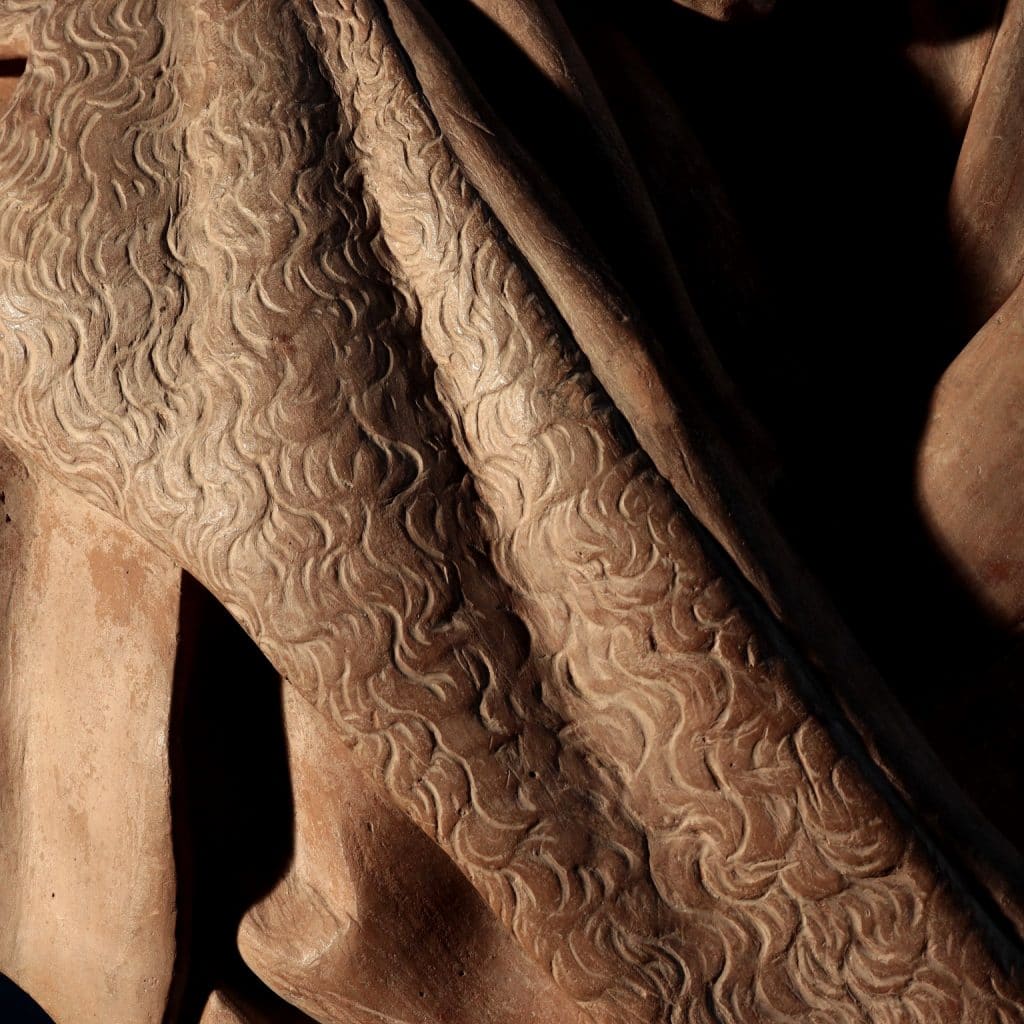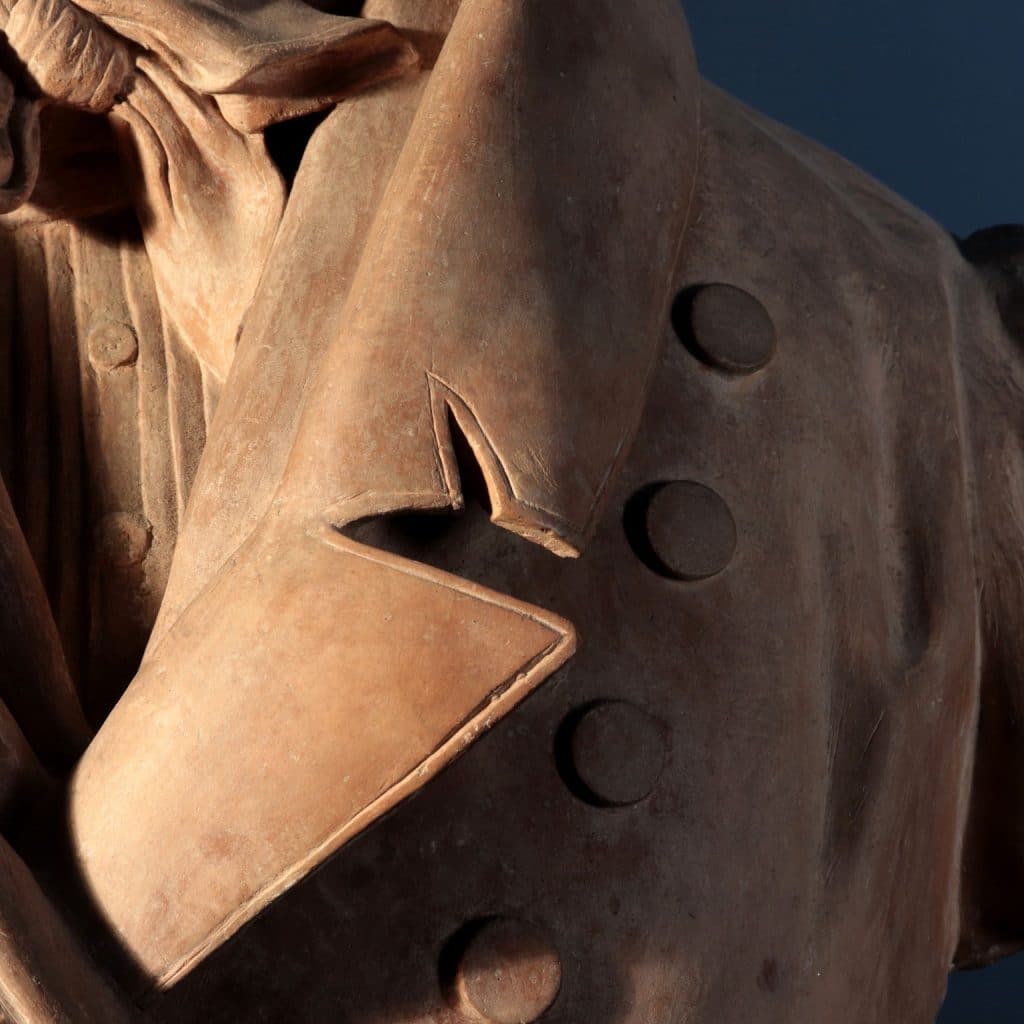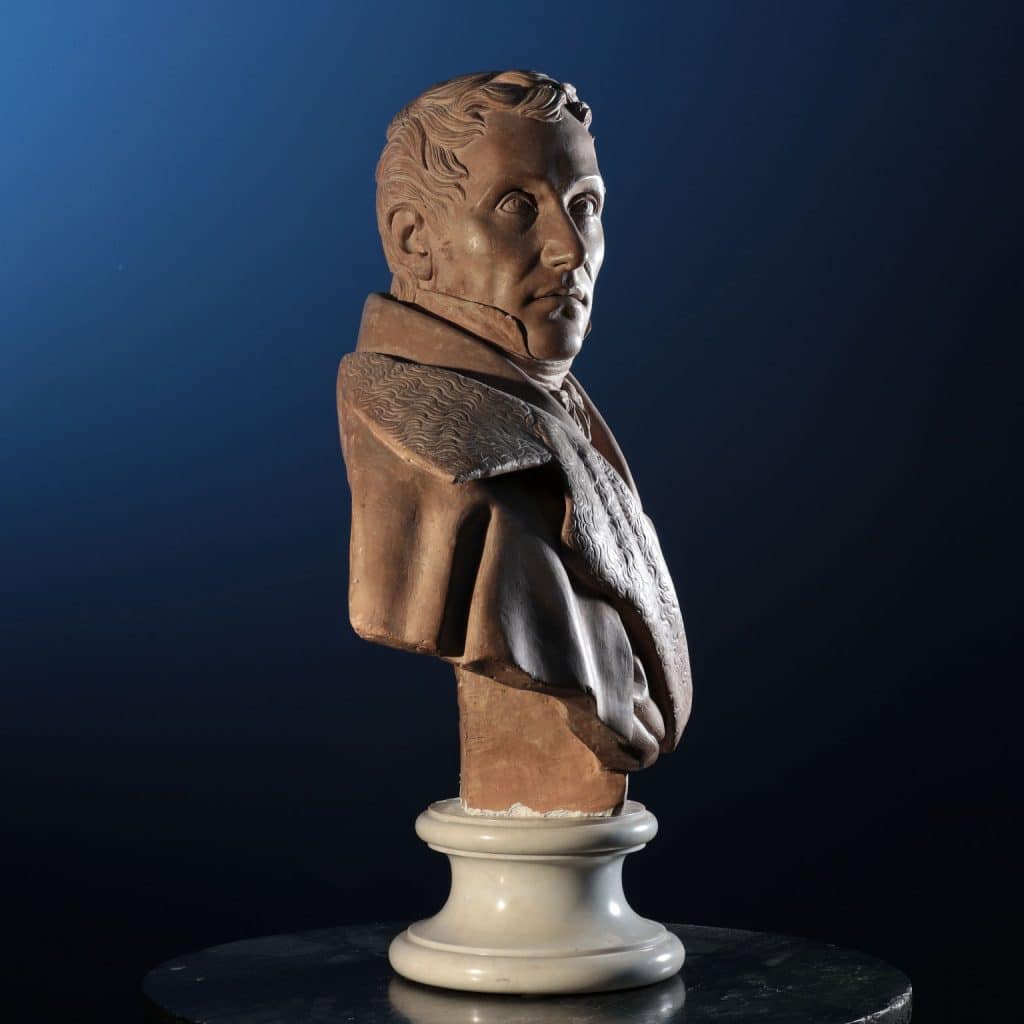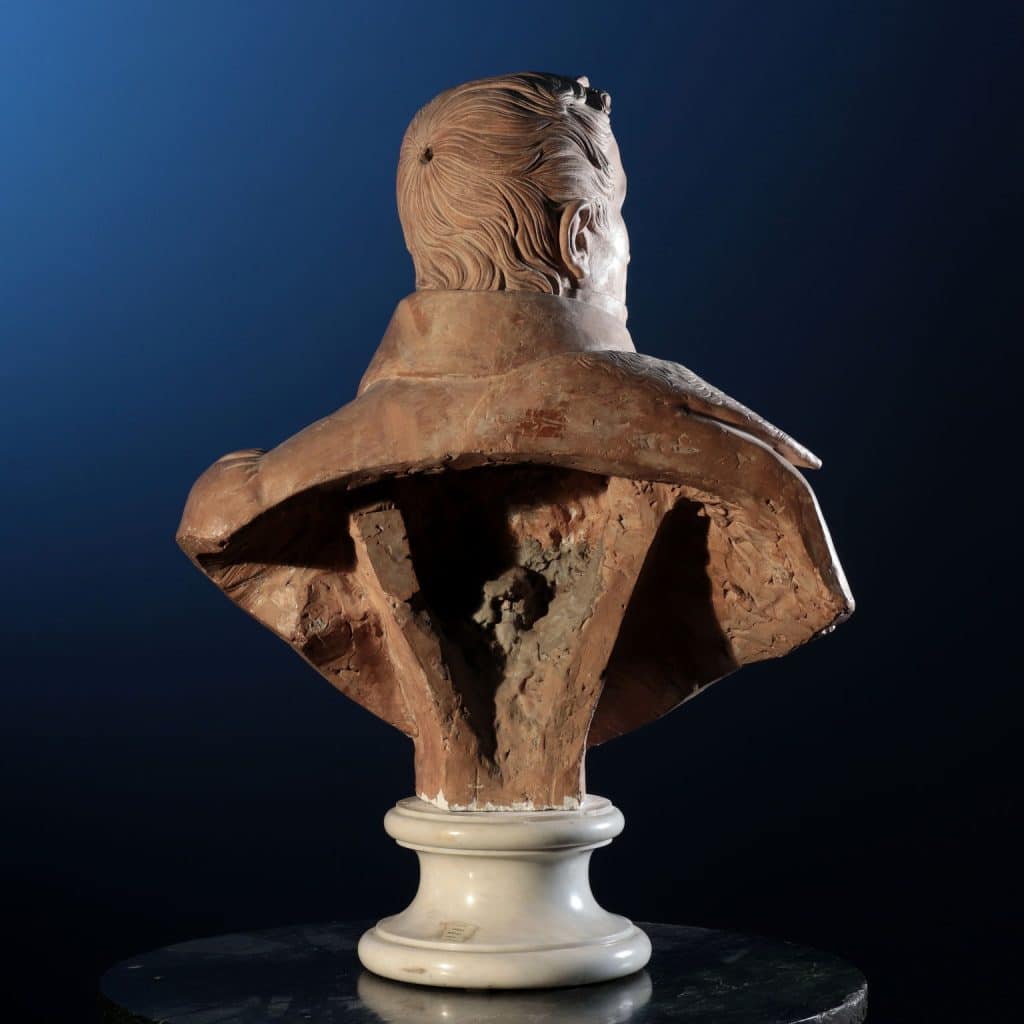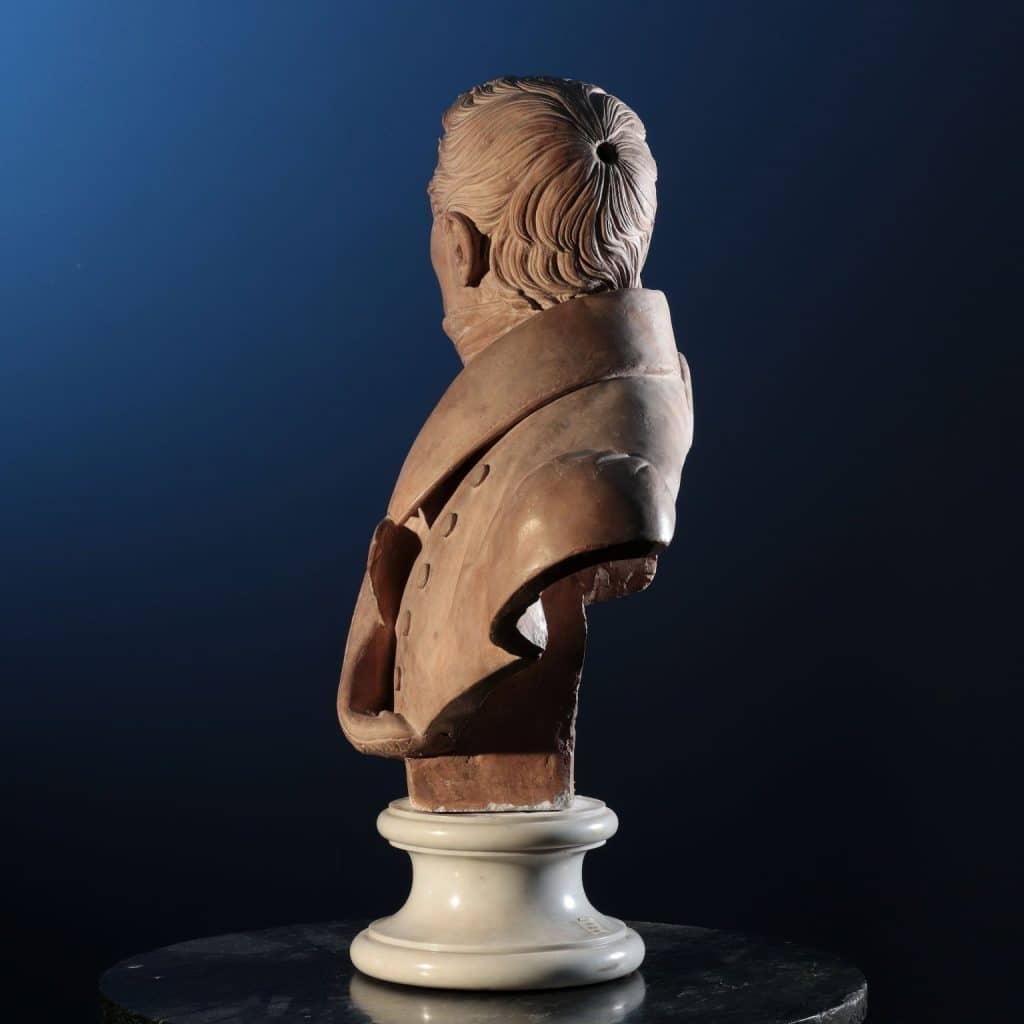Empire period, Northern Italy
Description:
Portrait with bust of a gentleman in terracotta on a white Carrara marble base.
The man is represented with his face turned to the right, his proud gaze turned upwards.
The twist of the neck gives a sense of natural movement to the head. The “Brutus” hairstyle, short hair with irregular fringe on the forehead, very popular in the early decades of the nineteenth century, is finely crafted. The face has well-defined features. The forehead is high, framed by locks of hair. The pronounced but absolutely balanced nose gives a sign of the subject’s virility. The thin mouth does not let emotions shine through. The expression is proud and haughty, it recalls the heroic and triumphant climate typical of the Napoleonic age.
Even the clothing recalls the canons of the time: habit à la francaise with tailcoat, waistcoat, shirt with stand-up collar (and raised points), tie tied to a gala and carrik (long overcoat with double cape and long collars).
Much attention is paid to the details of the garments worn: in particular the tie, a long thin strip of linen or silk turned several times around the neck and knotted on the front, has a particularly articulated and complex bow and the flap / lapel of the overcoat is made in order to recall the softness of furs.
Dimensions: 60 x 55 x 26 cm, base h 14 cm ( 23,6 x 21,6 x 10,2 in; base h 5,5 in )
CODE: ARTART0000143
Historical-stylistic analysis:
The peculiar characteristics of this portrait highlight the probable origin from a cultural environment of great depth and prestige. Although it has not been possible to identify the person portrayed or even his performer, the features highlighted still allow us to place the work in the early nineteenth century. The most plausible reference, considering the quality and refinement of the work, is clearly the environment linked to Canova: expressive backbone, attention to detail, plasticity of rendering allow us to believe that the author may have operated in the Lombardy-Veneto area under its direct influence.
The advent of Napoleon emperor on the European political scene in 1804 determined a fruitful period of Canova’s artistic production, during which he produced, in addition to the numerous and most famous works, also some Napoleonic busts and his own self-portrait that show stylistic and cultural affinities with the one under consideration.
In particular, the bust of Napoleon preserved in the Chatsworth Devonshire Collection (1803): after the death of Canova, the work was sold to the Marquise Anne of Aubercorn, who in turn gave it to the sixth Duke of Devonshire, who placed the work in the center of the sculpture gallery of the Chatsworth residence, in front of a bust of Alexander the Great.
In the plaster prototype (now preserved in the Possagno plaster casts gallery – Illustration 2) Napoleon is portrayed in uniform, frontally, with sunken eyes fixed and slightly turned downwards as a sign of reflection and concentration; the eyebrows are frowned to express the depth of thoughts. The pronounced chin and full face convey the firmness of character but also the freshness of young age.
In the marble bust instead (Illustration 1), Napoleon is stripped of his military robes and depicted shirtless. The consul is depicted sideways, with a twist of the neck that gives movement to the figure, making it more alive and less static than that of the prototype.
The forehead is high, framed by locks of hair that fall on the face with a refined slovenliness. Hair is a distinctive sign of the time: Napoleon had in fact adopted the fashion, which spread after the French Revolution as a sign of discontinuity in the past, of short hair (“alla Caracalla” or “alla Tito”, or “alla Bruto”). The eyes are sunken and the gaze lost. The nose, large and pronounced, gives a sign of the subject’s virility. The thin mouth does not let any emotion shine through.
Other works, also by Canova, which recall that of the anonymous sculptures are the bust of Francis I of Austria (preserved at the Kunsthistorches Museum in Vienna -1804-1805- Illustration 3) and the bust of his own portrait (preserved in Possagno- 1812 – Illustration 4).






